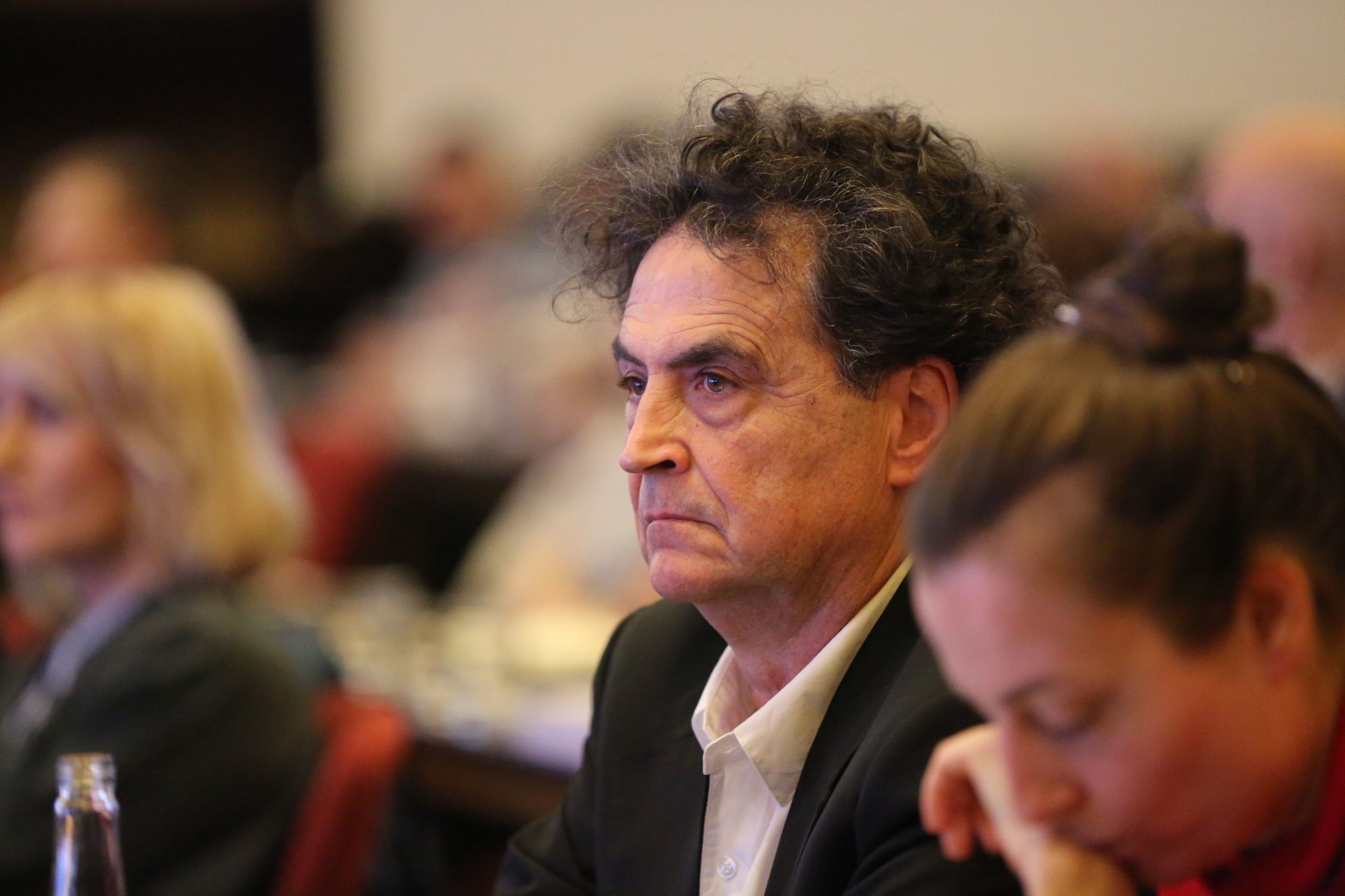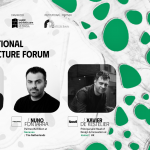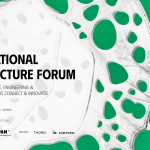In Dialogue with FERNANDO MENIS
“I think architects, journalists, attorneys or politicians are people who must adapt to current changes and nowadays changes are faster(…) However, you must not lose your common sense because it lasts forever.”
Fernando Menis: I think I represent a combination of pragmatism – I love good engineering and structures and this was my father’s influence because he was exactly like that – and idealism that I got from my mother – you cannot know whether she says something real or if it’s just fiction. I am a dreaming person, I love spending time on the beach looking at the sun and I also love being here today and meeting new people. My formation is more global – I’d like to understand a little bit of all the cultures in the world that have completely different visions for the same things. For my culture this thing can be bad, but you can go to another culture where it has a positive impact. In the end, you understand that everything is filtered for a certain culture and it can make you a little stupid because a culture can even filter the colours sometimes.
Andreea.Movila.: They can tell you that red is yellow and you get to believe it depending on the trends?
F.M.: I’ve lived in a very small town a part of my life riding my bike and going to the beach. Now 40% of my life is about teaching in Hong Kong, the Emirates or about being here today. I am really living two lives: one is very global and I really love that, but I also enjoyed being on the beach Saturday morning – and that is my second life, the local one.
A.M.: This can be seen in your career too. Each of your work has a great attention to the materials reflecting these two worlds personality to a certain extent.
F.M.: I’ve always liked to be very local and understand the place I’m working in.
A.M.: Do you like teaching? Do you find this rewarding?
F.M.: Yes, I love teaching! Teaching is like an internship – I share my experience with the students and they are fascinated because I have worked for a lot of years; I try to be very close to them and on the other side, they can offer me a lot of new ideas without any technical knowledge – they only have a lot of dreams.
A.M.: This opens up your mind.
F.M.: This is one of those moments when you have the satisfaction of being like a guru, especially when they give me their fresh approaches in return. I remember one year with my students from Hong Kong when we had a long trip to the north of China. There was snow and more than half of my students hadn’t even seen snow before – this was a really nice experience.
A.M.: You travel a lot from Spain to China and you’ve also held some classes in other countries. How do you perceive the difference between the cultures?
F.M.: I think China is a country that is coming from behind. They are making a lot of mistakes, that’s true, but mistakes are always a part of evolution. The new generation is coming with a very good formation – they taste the American way or the Spanish formation and all of them come back to China and they are very critical of the Chinese people; they want to change the country. Every day in China offers more clever and professional individuals who respect intellectual property – they do make a lot of mistakes but I’m always asking people ‘What comes first – money or culture?’ And they always tell me that culture comes first – money is only half of the story.
A.M.: What about Spain architecture at the present moment?
F.M.: I think that Spanish architects are very well prepared because they also have very good teachers. Everything has changed from the moment Spain joined the European Community in 1986.
A.M.: It is acknowledged that there is strong positive output for the Spanish architects to the entire world. I will turn the discussion to the way we’re preparing young architects for the future.
F.M.: I think architects, journalists, attorneys or politicians are people who must adapt to current changes and nowadays changes are faster. Something that took 10 years in the past, can now take one year to change – just think about the car industry for the past five years. However, you must not lose your common sense because it lasts forever. The human condition now is the same as it was two years ago: we need protection. A house to be nested, a theatre has to be more open, a hospital needs incredibly precise machines but the human essence doesn’t change. However, the production systems change everything. Ancient Egyptians might have known how to make a ring, for example, but the production would have taken a lot more time.
A.M.: Psychologists define intelligence as the capacity of adapting to a new system but lately the definition has shifted from the capacity to adapt to the capacity to adapt for a purpose. People believe that even if you program a machine to do a task and learn from its experience, it should have a target. So intelligence is the capacity to adapt to changes based on experiences, but with a target in mind.
F.M.: I completely agree with you. I think you must adapt and use what you have in order to accomplish something. Every day is like the first day of your life – this is the secret.
A.M.: But you must have a lot of energy and resilience in order to be able to succeed.
F.M.: Every day is a fresh start – you must be optimistic, communicate with the people and take your own decisions in the end with a lot of responsibility.
A.M.: Yes, because being an architect means that you are capable of taking decisions for other people sometimes. What are the main challenges for the future in your opinion?
F.M.: I think the construction systems changes all the time. If you go back in time, you can see that people used to work with stone and all the houses were vertical. When people reinvigorated concrete – the Romans used concrete two thousand years ago – a rational stage of architecture started developing because of the change in the construction system. There is a big difference Le Corbusier and Mendelsohn or Schinkel – Schinkel was very rational but he didn’t have concrete. Le Corbusier had concrete and that changed everything. After that, people discovered using steel. When Scharoun made the Berlin Philharmonic the drawings were amazing and the real building followed the drawing. Today you have all these computers that can aid coming up with all sorts of plans or concepts. Scharoun’s Philharmonic is real and it offers for example the opportunity for Gehry to use the drawings of Scharoun as an inspiration for the Guggenheim Museum in Bilbao but with the help of a computer. In the end, life is between the construction and the possibilities you have at the moment. You may never know where they can come from – everything is serendipitous. I am anchored in the real life and I really appreciate real models. I’m sure you know Lego, but I don’t know if you are aware of the fact that there is a computer Lego. When playing with Lego, there is a possibility of it falling down. However, if you’re playing with the computer Lego, it may never suffer from falling down. I think we must find the balance between dreaming and reality because although I love the human curiosity and imagination to construct dream lives we are human and we need to be anchored in the real life. I have a book called Reason + Emotion – the emotion can be quantified but the important things are the layers of reason. Emotion without reason is very bad!
A.M.: You talked about dreams. What would be your dreams related to architecture?
F.M.: I think my life is already a dream. [laughs] I worked for people and governments and I always tried to domesticate the dreams with some kind of technical knowledge.
A.M.: How the architect should position himself inside the society?
F.M.: Our big compromise must be with the environment – this has to become our main concern. We have to construct healthy places, implement a reuse policy and use local resources. I am completely disappointed when I go to the desert and I see a glass tower – you don’t need so much glass in a place full of light. But if you go to London, where everything is gloomy, of course you need glass… For example, in Switzerland everything must be prefabricated, in Poland or even here you can have a hand-constructed building because you therefore create a lot of employment options. Our work brings money to a lot of families and it is very important to accept that a Swiss building must be completely different from a Romanian building. Swiss construction workers earn a lot more than Romanian workers and their buildings are more technological because they have a lot of factories for repairing everything, whereas here buildings have to be very simple.
A.M.: People here become very creative in coping with all kinds of situations that may occur.
F.M.: I don’t know whether it’s better to live here or in Switzerland. Being happy is a matter of the mind and not a matter of money.
A.M.: What makes you happy in architecture?
F.M.: The moment when I come back to the building after several years and the people are happy with my work. I finished my last project in Poland, an auditorium, four years ago and I went there recently – I am now part of the community and accompany them to concerts. One time the orchestra conductor rotated with 180 degrees and spoke to the public in Polish – I couldn’t understand a thing. He said ‘Fernando Menis, are you here today?’ The people got up and clapped – that was unbelievable and it was clear to me that all the people were very happy with my work there. And I’m not even Polish. A mayor named a square ‘Menis Square’ in Switzerland – and I am from one small town in Tenerife. I am not from New York or Paris – I am from a simple family living in a small town.
A.M.: Putting yourself in the service of society really gave you back numerous rewards. Thank you for your time!




